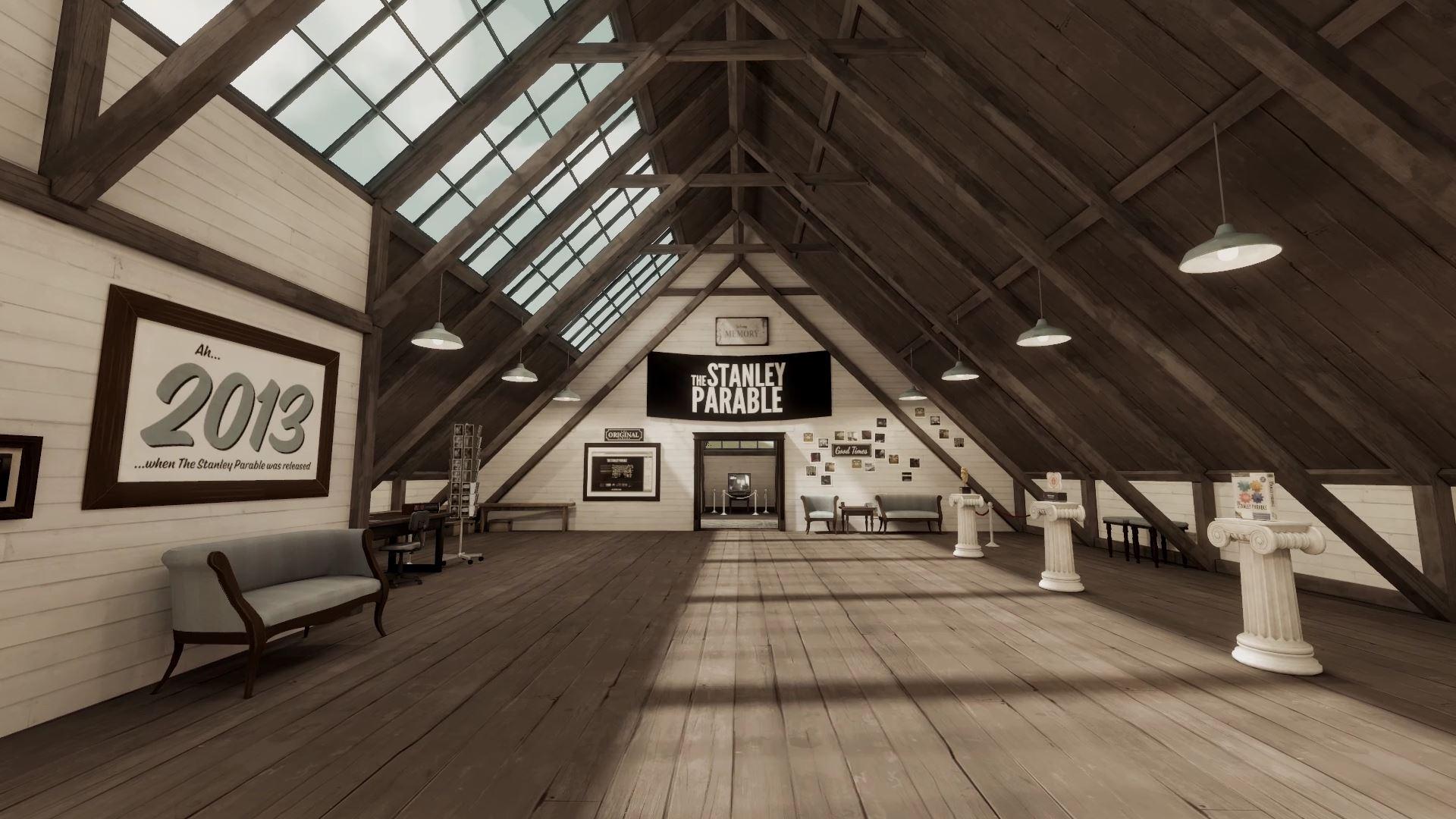The Stanley Parable: Ultra Deluxe is the pseudo-sequel to the Stanley Parable, both written by Davey Wreden and William Pugh for Steam. The Stanley Parable UD targets enjoyers of video game meta commentary, as it contains many references to gaming community phenomena like Steam reviews, releases versus sequels, and achievement collecting.
The objective of the game is discovery. Now at a whooping 42 unique endings, the Stanley Parable: Ultra Deluxe rewards players for exploring all the content hidden along the way. It’s a single player “versus” environment game, where the playable character can only interact with select items in the environment and the human player can make decisions based on the narrator’s comments. Interestingly, there are no in-game resources. There’s no inventory and no way to check progress (outside of Steam achievements). The main resource for the player is their time, as the more time they can commit, the more they can discover.
The game massively triumphs as a commentary on game development and the Stanley Parable’s success. For example, one ending path explores nostalgia lens and negative criticism and the narrator character becomes obsessed with the original game’s success before crumbling the game as he tries to combat negative Steam reviews. Every new path rewards the player with new and exciting experiences and insights, keeping its promise of discovery.
“When every path you can walk has been created for you long in advance, death becomes meaningless – making life the same. Do you see now? Do you see that Stanley was already dead from the moment you hit start?” – The Female Narrator
Walking is a reflection of everything the game is about: constraint. Outside of some special events (like Stanley floating to convince himself he’s dreaming or the narrator implementing a jump button), Stanley can only walk. The entire game is a push and pull between the constraint of the narrator’s script and the player trying to break free of them. However, no matter what path the player takes, the narrator’s script goes on, showing that the “path they chose” was predetermined from the beginning.
By restricting movement to just walking, the developers emphasize the illusion of free will in the game. Technically, you can walk anywhere but where you walk was designed for you, and where you can go is restricted by walking. You can never reach the top of platforms because you can’t jump, you can’t scale a wall because you can’t climb, you’re forced to walk because that is what the path you’re given is built for.
In this way, the developers strongly tie mechanics to theming. The walking and decision making clearly aligns with the idea of literal and metaphorical predetermined paths, giving thought provoking commentary into the concept of free will.
If I could critique one thing, it would be managing information inside the game. I think it’d be helpful to have a system showing the decision tree (like in Detroit: Become Human), which could help players fully discover the content easier.

Figure 1: Detroit: Become Human’s decision map UI




